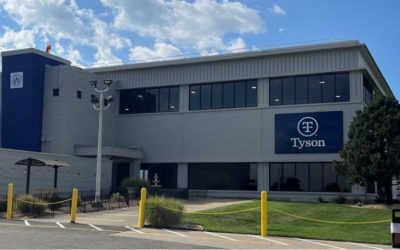Post-pandemic, retailers are feeling the effects of labor shortages more than ever. Here’s what you can do about it.

A Shortage That’s a Long Time Coming
Like many industries, the effects of COVID-19 labor shortages hit the retail meat department. And while economists predict that hiring will catch up to job growth, labor issues in the meat department are likely not going anywhere.
Tyson Sr. Customer Development Manager Mark Belding puts it into perspective. “Finding and training meat cutters post-pandemic is especially challenging for all retailers, regardless of size,” he said.
“Meat cutting is a skill that takes time and experience to refine, often not something today’s fast-paced retail environment can accommodate for.”
The data also paints a picture of a waning profession. According to the U.S. Bureau of Labor Statistics, employment of meat cutters is projected to grow an unenthusiastic 2% from 2019 to 2029, less than half the average predicted growth for all other occupations.
There is also the issue of income itself. Currently, the median pay for butchers falls $9,000 short of the national average for all occupations across all industries.1
Seemingly little incentive for younger talent to join the occupation, coupled with current meat cutters aging out, the availability of skilled labor in the meat department is stretched even thinner.
With no signs of letting up, some solutions can go to work for you right now.

Case Ready To Meet the Challenge
“Case ready product demand is higher than ever,” Belding said. “Case ready meat solves the biggest problem facing today’s meat department: a skilled labor shortage.”
The deck is stacked in favor of adopting a case ready program, too.
Shoppers already have a positive impression of case ready proteins, with 26% believing pre-cut beef and pork are better than meat cut and packaged in-store.2
Moving forward, the same quality and appearance in-store and out for delivery is key to maintaining meat customer loyalty beyond brick and mortar.
Consumer trends indicate 81% of shoppers expect to shop for groceries online more (or about the same) after vaccines and restrictions are lifted.3

Doing the Math on Value Added
Heavy sales seasons for retail meat cuts like summer grilling and the winter holiday season significantly strain operations. And when it comes to the back of house prep for beef and pork, it’s the little things that create the biggest traffic jams.
Too much knife work? Look into sliced, diced and cubed proteins. Individually packaged and transported, not only is the labor solved, but you gain increased shelf life and limit yield loss with your product.
The value of pre-marinated, pre-seasoned meats is also a volume driver. With an appeal that can go broad or stay laser focused, these specialty cuts bypass the hassle of formulating and prepping in-store, creating a simple, highly effective labor-saving solution.
A variety of flavors and consistency in quality add up. According to the 2021 Power of Meat Data Insights, 18% of consumers expect to purchase more value added meat, while 74% are expected to remain steady in their purchasing behavior.
While available labor may be dissipating, the demand for meat is still going strong. If you want protein innovations to go to work solving your labor shortage pain point, reach out today to get started.
2 Source: 2021 Power of Meat Data Insights
3 Source: 2021 AMC Consumer purchasing behaviors










